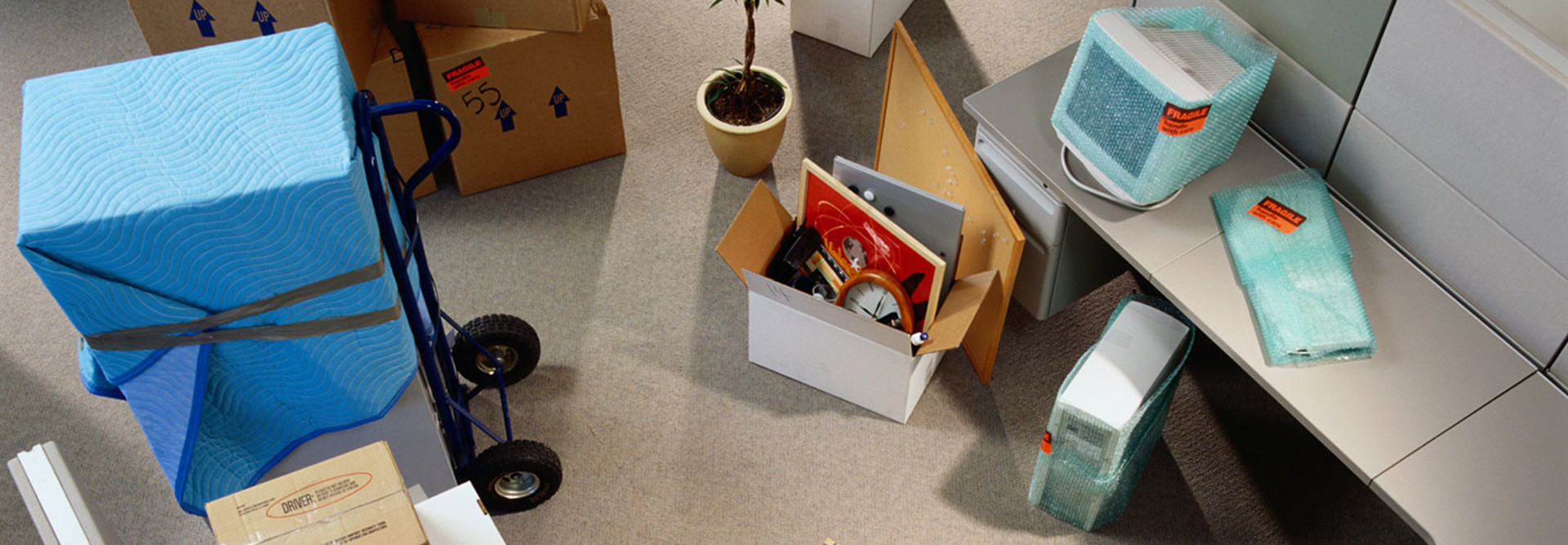IT on the Move: A Pre-Move Checklist
For small business operators, managing a growing operation is hard enough. Moving to a new or expanded space can become chaotic at best if every issue isn't addressed. Plans must be developed, sites assessed, vendors and services orchestrated, and equipment moved, tested and deployed. Financial concerns aren’t unfounded either—miss one thing, and you could face costly hours or days of downtime. A robust IT checklist, such as the one below, helps prevent that.
Early Stages and Planning
- Create a detailed list of technology vendors, partners and consultants.
- Contact telecom, data and technology service providers and inform them of the move location and date.
- Work out move logistics. Assess available parking, loading infrastructure (such as a freight bay and freight elevators) and hallway widths at the site.
Site Survey
A firm’s IT leader should visit the new space to ensure that it meets the business’s needs. Among the activities to perform during the site survey:
- Perform a wireless site survey. Walk the space with a portable transmitter to measure interference factors that affect Wi-Fi signal range and performance, and map Wi-Fi access points accordingly.
- Review the site configuration plan and assess how it fits with the physical space.
- Verify the location of workstations, wireless access points, cable drops, power outlets and network wiring closets, as well as shared office equipment such as printers and copiers.
- Identify available power outlets and the condition of the power being delivered.
- Inspect proposed server rooms and wiring closets to confirm that they meet (or can be modified to meet) requirements for space, electrical service, cooling and security.
- Assess utility services and infrastructure, including electricity, heating and cooling, plumbing and garbage collection.
- Consider security: Determine location, type and management of installed card readers and security cameras. Determine if new security systems should be installed.
Equipment Evaluation
Small businesses should take advantage of a move or expansion to update network equipment, servers, PCs and cabling to improve performance, reliability and management.
- Conduct a hardware inventory: Determine if existing equipment should be retained or replaced with newer gear.
- Create a hardware purchase list: Account for both retired equipment and new hardware needed to address the expanded operation. Place orders with appropriate vendors and arrange for delivery well ahead of the move.
- Assess server room and wiring closet requirements based on the updated equipment inventory.
Data and Telecom
Firms should work with vendors to ensure a smooth transition of services such as phone and internet.
- Assess wide-area connectivity options, weighing bandwidth, latency and potential redundancy against expected workloads.
- Determine the type of phone system to be used. If using dedicated phone lines, determine how many lines are needed.
- Order phone handsets, headsets and other peripheral equipment. If phone numbers are being changed, set up call forwarding.
- Assess deployed Ethernet cable runs for type, length, number and location. Where installing cable, consider redundant runs of Cat6a Ethernet.
- Order internet and phone service at the new location. Work with vendors to ensure that service is live at move-in.
Moving Day
Things to consider in the days and hours ahead of the move:
- Perform and verify a complete backup of company data, systems and IT configurations. Store backups securely throughout the move.
- Label all wiring and cables before disconnecting them, so they can be reunited with equipment at the new site.
- Ensure that all IT passwords and access information are backed up to a secure and portable medium (such as an encrypted flash drive) and are accessible to privileged IT staff during the move.
- Create a full contact list of everyone involved in the move, including email addresses and cellphone numbers.
On the Other Side
- Check that cabling, equipment, phones and other systems are properly deployed.
- Test the phone system. Verify telephone numbers and their locations, and ensure that call forwarding rings the correct phones.
- Start up the network, boot servers and assess connectivity. Test each network connection, including wireless.
- Check that email, company websites and other online assets are all functioning.
For more on the technology upgrades small businesses should make when growing and expanding, check out, "Why Expanding Small Businesses Should Focus on IT Infrastructure Upgrades."








